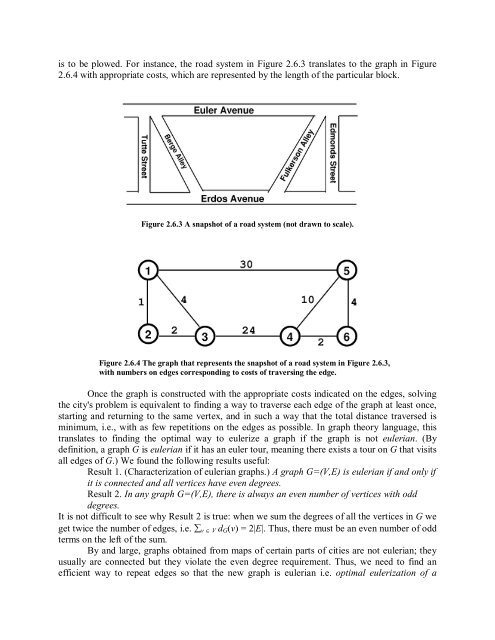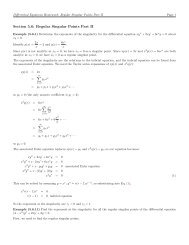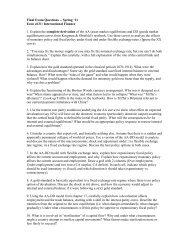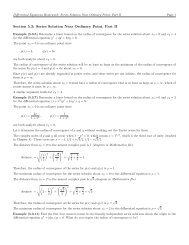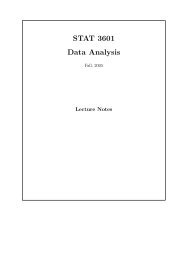Designing Efficient Snow Plow Routes - University of Minnesota
Designing Efficient Snow Plow Routes - University of Minnesota
Designing Efficient Snow Plow Routes - University of Minnesota
You also want an ePaper? Increase the reach of your titles
YUMPU automatically turns print PDFs into web optimized ePapers that Google loves.
is to be plowed. For instance, the road system in Figure 2.6.3 translates to the graph in Figure<br />
2.6.4 with appropriate costs, which are represented by the length <strong>of</strong> the particular block.<br />
Figure 2.6.3 A snapshot <strong>of</strong> a road system (not drawn to scale).<br />
Figure 2.6.4 The graph that represents the snapshot <strong>of</strong> a road system in Figure 2.6.3,<br />
with numbers on edges corresponding to costs <strong>of</strong> traversing the edge.<br />
Once the graph is constructed with the appropriate costs indicated on the edges, solving<br />
the city's problem is equivalent to finding a way to traverse each edge <strong>of</strong> the graph at least once,<br />
starting and returning to the same vertex, and in such a way that the total distance traversed is<br />
minimum, i.e., with as few repetitions on the edges as possible. In graph theory language, this<br />
translates to finding the optimal way to eulerize a graph if the graph is not eulerian. (By<br />
definition, a graph G is eulerian if it has an euler tour, meaning there exists a tour on G that visits<br />
all edges <strong>of</strong> G.) We found the following results useful:<br />
Result 1. (Characterization <strong>of</strong> eulerian graphs.) A graph G=(V,E) is eulerian if and only if<br />
it is connected and all vertices have even degrees.<br />
Result 2. In any graph G=(V,E), there is always an even number <strong>of</strong> vertices with odd<br />
degrees.<br />
It is not difficult to see why Result 2 is true: when we sum the degrees <strong>of</strong> all the vertices in G we<br />
get twice the number <strong>of</strong> edges, i.e. v V dG(v) = 2E. Thus, there must be an even number <strong>of</strong> odd<br />
terms on the left <strong>of</strong> the sum.<br />
By and large, graphs obtained from maps <strong>of</strong> certain parts <strong>of</strong> cities are not eulerian; they<br />
usually are connected but they violate the even degree requirement. Thus, we need to find an<br />
efficient way to repeat edges so that the new graph is eulerian i.e. optimal eulerization <strong>of</strong> a


